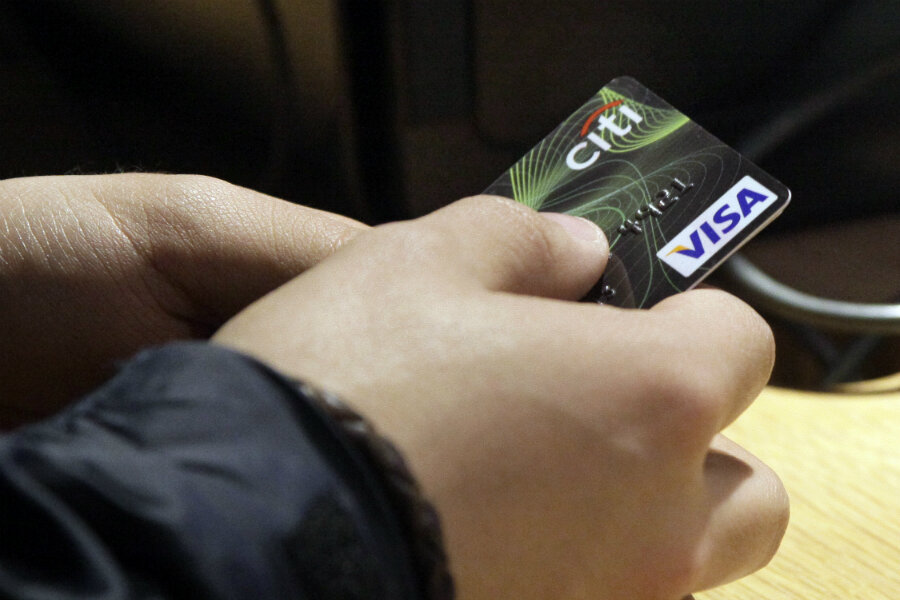Household debt nears an all-time high. What's behind the rise?
Loading...
Household debt in the United States is reaching levels close to the all-time peak that came during the 2008 financial crisis, according to a survey from the Federal Reserve Bank of New York.
Buoyed by more easily available credit, total debt in the fourth quarter was at $12.58 trillion, just 0.8 percent below the $12.68 trillion of the third quarter of 2008. The makeup of that debt by type, however, was different: Mortgages accounted for a smaller share of household debt at the end of 2016 than at the verge of the housing-market-triggered crisis of 2008.
"Since reaching a trough in mid-2013, the rebound in household debt has been led by student debt and auto debt, with only sluggish growth in mortgage debt," said New York Fed senior vice president Wilbert van der Klaauw in the report.
The new study returns the spotlight onto the first two types of debt – student loans, whose debt load swelled to $1.31 trillion, and loans for autos, which reached $1.16 trillion – at a time when both have drawn scrutiny by regulators and politicians.
Because the New York Fed doesn’t adjust its figures for inflation, the report actually shows signs that American households are finally beginning to move past the long-lasting effects of the financial crisis. "When measured against the broader economy, total household borrowing today is 67% of nominal gross domestic product, compared with about 85% in 2008," reports The Wall Street Journal.
But even though Americans are getting smarter about buying homes, consumers are still vulnerable to questionable practices in the student loan and auto loan industries.
Last month, the nation’s biggest student-loan provider, Navient, was sued by the Consumer Financial Protection Bureau (CFPB) for a raft of alleged deceptive practices that included misinforming borrowers and neglecting to act on complaints. And in a corner of the loan industry that involves about 7 in 10 incoming college freshmen, many people aren’t particularly well-informed about the decision they’re making, as The Christian Science Monitor reported in October:
“It’s a big problem that people don’t know what they’re getting into,” says Urban Institute senior fellow Matthew Chingos. His own research shows that, of those borrowers receiving federal loans, approximately 28 percent were not aware that they were receiving those loans, he says.
“The focus should not be so much on the numbers,” says Dr. Chingos, “but on the real problems people are facing.”
A borrower with just $5,000 in debt but no college degree, for example, could be in far worse trouble than a new engineer with tens of thousands of dollars in loans and a stable job. Instead, experts say, the focus should be on helping borrowers make the right decisions, and ensuring that federal aid meets students' need, so that they are not forced to take on private loans with higher interest rates.
Auto loans have come under scrutiny, too.
As the Monitor reported last May, a CFPB report from that month found that for many car buyers, auto title loans designed to offer short-term access to cash often ended up snowballing into long-term debt:
The bureau’s study of 3.5 million loans from 2010 to 2013 showed 1 in 5 borrowers with a single-payment auto title loan ends up having his or her vehicle possessed by lenders, and around half of such loans end up becoming longterm debt obligation with borrowers frequently taking out four or more loans to repay their initial loans. Eighty-percent of auto title loans are not repaid in full in a single payment.
The CFPB also found that around two-thirds of the title loan industry is supported by borrowers stuck in a debt cycle for seven or more months.
“Our study delivers clear evidence of the dangers auto title loans pose for consumers,” CFPB Director Richard Cordray said in a release. “Instead of repaying their loan with a single payment when it is due, most borrowers wind up mired in debt for most of the year.”
Overall, however, while student loans and subprime loans continue to raise concerns, "delinquency rates have continued to decline," reports the Journal.
This report contains material from Reuters.






